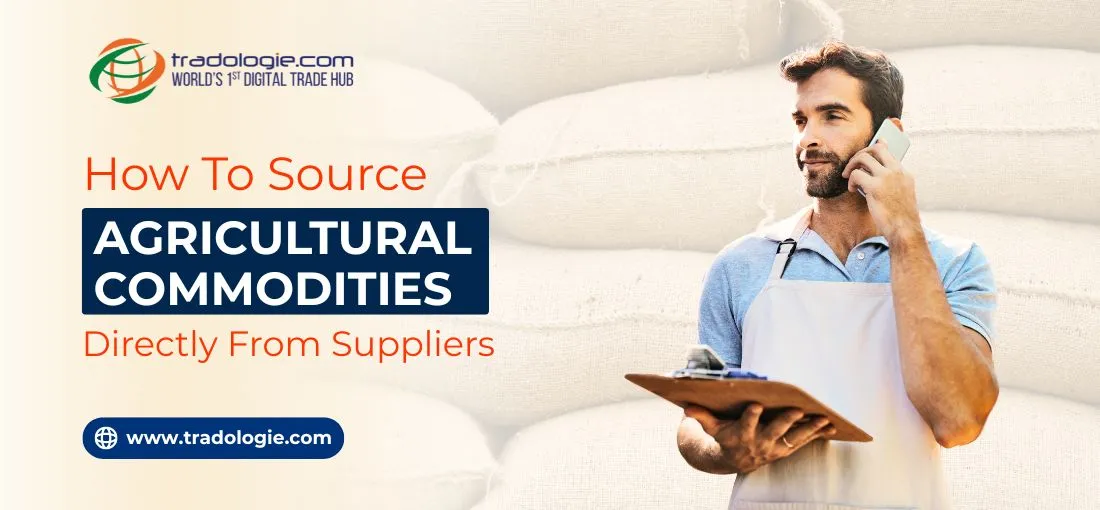Key Highlights:
- Global saffron market poised for steady growth (7.1% CAGR till 2030)
- India, Iran, Afghanistan & Spain lead global saffron trade
- Kashmiri saffron stands out for purity, aroma, and Himalayan origin
- Key certifications: APEDA, FSSAI, Phytosanitary, ISO & Origin
- Premium packaging vital — vacuum-sealed, graded, and authenticity-marked
- Major buyers: UAE, Saudi Arabia, USA, Spain & Japan
- India’s potential strong in premium niche markets despite low volumes
- GI-tag & global wellness trends open new export opportunities
If there is one commodity that commands the most premium value among the spices, it is none other than saffron. It is a commodity whose pureness defines its B2B commercial value. In fact, it won’t be a hyperbole to say that it is among the most premium commodities of all the spices. The global saffron market, valued at USD 602.2 million in 2023, is expected to expand to USD 959.38 million by 2030, registering a CAGR of 7.1% during the forecast period (2024–2030).
Countries like India, Afghanistan, Iran, and Spain are among the top nations that export saffron in bulk globally. However, the Indian Saffron is renowned for its unique association with Himalayas, particularly Kashmir.
You are at the right place if you are looking to Export Saffron in Bulk. This informative piece of blog will provide you all the vital information needed to make your saffron business reach global purely in terms of certification, packaging and buyer markets.
Certifications Required to Export Saffron from India
Before exporting saffron, Indian exporters must obtain essential certifications and clearances to ensure product quality, traceability, and compliance with international standards.
APEDA Registration (Agricultural and Processed Food Products Export Development Authority):
Exporters must register with APEDA, which operates under the Ministry of Commerce and Industry, Government of India. APEDA oversees the quality of agricultural exports and ensures that products meet global safety and hygiene standards. This registration is mandatory for saffron exports.
FSSAI License (Food Safety and Standards Authority of India):
FSSAI certification is like the heart of all certifications that assures that the food commodity is safe to export and does not have any quality issues. It is the major governing body in India that determines the food safety regulations and does the timely evaluation of food commodities. So, every saffron exporter needs to have a FSSAI license to export globally
Phytosanitary Certificate:
The evolution of food safety norms, especially for pesticides, has resulted in the coming up of many certifications, and this food certification is one such. A phytosanitary certificate is issued by the Plant Quarantine Department of India, confirming that the product is pest-free and compliant with the importing country’s plant health requirements.
Certificate of Origin:
Issued by the Chamber of Commerce or APEDA, this certificate confirms that the saffron is of Indian origin—essential for claiming preferential tariff benefits under trade agreements.
Quality Certification (ISO & HACCP):
These certification plays a critical role, especially for the saffron exporters looking to export saffron in bulk to the European and Middle East markets. They ensure a strict adherence to the global food safety management systems.
Packaging Requirements for Saffron Exports
Saffron is a highly delicate commodity. This is because its quality and value can deteriorate rapidly if not handled and packed properly with care. Packaging thus plays a very vital role in maintaining its aroma, flavor, and purity during the entire shipment process.
Material: Use air-tight, moisture-resistant, and light-proof containers made of glass, tin, or aluminum foil.
Grading & Labeling: Export packages must clearly mention grade (Mogra, Lacha, etc.), batch number, country of origin, net weight, and date of packing.
Vacuum Sealing: Vacuum packaging prevents oxidation and preserves the spice’s volatile compounds, ensuring maximum freshness.
Export Cartons: Small retail containers (0.5g to 5g) are packed into export cartons lined with protective cushioning to prevent breakage during transit.
Premium saffron exporters also focus on branding and authenticity labeling using holograms or QR codes that verify the product’s origin and quality—essential in preventing counterfeiting in markets like the EU and Gulf nations.
Buyer Markets for Indian Saffron
India’s saffron is exported to several countries, including the UAE, Saudi Arabia, Qatar, the United States, Spain, and Japan. However, the global saffron market is dominated by Iran, Afghanistan, and Spain—three nations that set the tone for international trade in this luxury spice.
According to Tendata.com and ESSaffron:
Iran is the world’s largest saffron producer and exporter and accounts for nearly 85–90% of global saffron output. In 2024 alone, Iran’s saffron exports were valued at approximately US $95.5 million. This represents a large chunk of around 37.7% of the global saffron export value.
Afghanistan follows with around US $60.4 million in exports (roughly 23.9% of global share) which is supported by government initiatives and international aid to promote saffron as a sustainable alternative to opium cultivation.
Spain is known for re-exporting processed saffron and largely contributes about US $56.2 million to global saffron exports in 2024 ( around 22.2% share). This keeps its strong presence in the EU and North American markets.
It is worth noting that by contrast, India’s saffron exports are modest, largely due to limited cultivation confined to Kashmir and challenges in standardizing quality. However, Indian saffron enjoys a niche demand in Premium Markets and is largely priced for its high value purity and aroma over volume. With strategic branding and better certification adherence, India has the potential to expand its presence, especially in Europe, the UAE, and East Asia.
Supply Chain and Export Process
The export journey for saffron typically begins in Pampore, Pulwama, and Budgam. These are the biggest saffron belts of Jammu & Kashmir. Farmers typically harvest flowers between late October and November. The stigmas are carefully dried and graded based on color and thread length before being sent to certified packaging facilities.
Procurement and Grading: Exporters source from verified farmers or cooperatives to ensure authenticity. The threads are categorized into Mogra, Lacha, and Zarda grades.
Processing and Packaging: The saffron is cleaned, dried under controlled conditions, and vacuum-sealed in food-grade containers to maintain its natural properties.
Quality Testing: Each batch undergoes testing for moisture, coloring strength, and purity. Only saffron meeting the ISO 3632 standard is cleared for export.
Logistics & Shipping: Exporters must comply with international phytosanitary norms and shipping documentation before dispatching consignments via air cargo to maintain freshness.
Challenges and Opportunities
India’s saffron export ecosystem faces hurdles such as limited production capacity, high labor costs, adulteration risks, and lack of cold-chain infrastructure. Yet, with the GI (Geographical Indication) tag for Kashmir Saffron, the country can leverage authenticity as a unique selling point. Moreover, increasing global preference for natural food coloring and traditional medicine has opened fresh export avenues for Indian saffron in nutraceutical and cosmetic industries.
Conclusion
While Iran and Afghanistan continue to dominate saffron exports globally, India’s unique Kashmiri saffron holds unmatched potential in quality and aroma. By strengthening certification compliance (APEDA, FSSAI, and ISO), ensuring premium packaging, and building transparent supply chains, India can elevate its saffron exports to meet international expectations. With strategic branding and government support, Indian saffron could soon capture a greater share of the world’s premium spice trade that positions itself not just as a product, but as a symbol of purity, heritage, and excellence.

-(1).webp)



